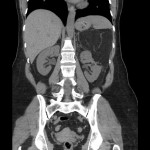Video: Significance of time interval between first and second TUR on recurrence and progression rates in BCG-treated NMIBC
Significance of time interval between first and second transurethral resection on recurrence and progression rates in patients with high risk non muscle invasive bladder cancer treated with maintenance intravesical Bacillus Calmette-Guerin
OBJECTIVES
To evaluate the effect of the interval between the initial and second transurethral resection (TUR) on the outcome of patients with high-risk non-muscle-invasive bladder cancer (NMIBC) treated with maintenance intravesical Bacillus Calmette-Guérin (BCG) therapy.
PATIENTS AND METHODS
We reviewed the data of patients from 10 centres treated for high-risk NMIBC between 2005 and 2012. Patients without a diagnosis of muscle-invasive cancer on second TUR performed ≤90 days after a complete first TUR, and received at least 1 year of maintenance BCG were included in this study. The interval between first and second TUR in addition to other parameters were recorded. Multivariate logistic regression analysis was used to identify predictors of recurrence and progression.
RESULTS
In all, 242 patients were included. The mean (sd, range) follow-up was 29.4 (22.2, 12–96) months. The 3-year recurrence- and progression-free survival rates of patients who underwent second TUR between 14 and 42 days and 43–90 days were 73.6% vs 46.2% (P < 0.001) and 89.1% vs 79.1% (P = 0.006), respectively. On multivariate analysis, the interval to second TUR was found to be a predictor of both recurrence [odds ratio (OR) 3.598, 95% confidence interval (CI) 1.885–8.137; P = 0.001] and progression (OR 2.144, 95% CI 1.447–5.137; P = 0.003).
CONCLUSIONS
The interval between first and second TUR should be ≤42 days in order to attain lower recurrence and progression rates. To our knowledge, this is the first study demonstrating the effect of the interval between first and second TUR on patient outcomes.



